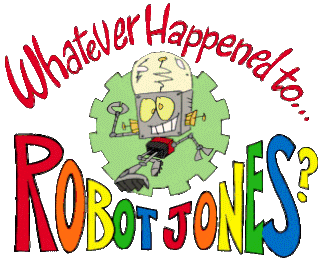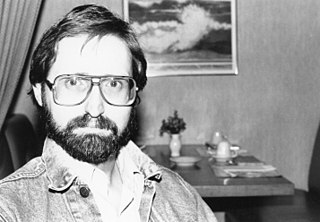
These are lists of animated television series. Animated television series are television programs produced by means of animation. Animated series produced for theaters are not included in this lists; for those, see List of animated short film series. These lists include compilation series of theatrical shorts such as The Bugs Bunny Show since they often feature some new wrap-around animation.

Hanna-Barbera was an American animation studio and production company that was active from 1957 until it was absorbed into Warner Bros. Animation in 2001. It was founded on July 7, 1957, by William Hanna and Joseph Barbera following the decision of Metro-Goldwyn-Mayer (MGM) to close its in-house cartoon studio, and was formerly headquartered on Cahuenga Boulevard from 1960 until 1998 and at the Sherman Oaks Galleria in Sherman Oaks, both in Los Angeles, California.

The Jetsons is an American animated sitcom produced by Hanna-Barbera Productions. It originally aired in prime time from September 23, 1962, to March 17, 1963, on ABC, then later aired in reruns via syndication, with new episodes produced from 1985 to 1987. It was Hanna-Barbera's Space Age counterpart to The Flintstones.
Original video animation, abbreviated as OVA and sometimes as OAV, are Japanese animated films and series made specially for release in home video formats without prior showings on television or in theaters, though the first part of an OVA series may be broadcast for promotional purposes. OVA titles were originally made available on VHS, later becoming more popular on LaserDisc and eventually DVD. Starting in 2008, the term OAD began to refer to DVD releases published bundled with their source-material manga.
Animation in the United States in the television era was a period in the history of American animation that slowly set in with the decline of theatrical animated shorts and the popularization of television animation during the late 1950s to 1960s, peaked in the 1970s, and ended in the mid-late 1980s. This era is characterized by low budgets, limited animation, an emphasis on television over the theater, and the general perception of cartoons being primarily for children. Due to the perceived cheap production values, poor animation, and mixed critical and commercial reception, this era is sometimes referred to as the dark ageof American animation by critics.
"Saturday-morning cartoon" is a colloquial term for the original animated series and live-action programming that was typically scheduled on Saturday and Sunday mornings in the United States on the "Big Three" television networks. The genre's popularity had a broad peak from the mid-1960s through the mid-2000s; over time it declined, in the face of changing cultural norms, increased competition from formats available at all times, and heavier regulations. In the last two decades of the genre's existence, Saturday-morning and Sunday-morning cartoons were primarily created and aired to meet regulations on children's television programming in the United States, or E/I. Minor television networks, in addition to the non-commercial PBS in some markets, continue to air animated programming on Saturday and Sunday while partially meeting those mandates.
An animated series is a type of animated television works with a common series title, usually related to one another. These episodes should typically share the same main characters, some different secondary characters and a basic theme. Series can have either a finite number of episodes like a miniseries, a definite end, or be open-ended, without a predetermined number of episodes. They can be broadcast on television, shown in movie theatres, released direct-to-video or on the internet. Like other television series, films, including animated films, animated series can be of a wide variety of genres and can also have different demographic target audiences, from males to females ranging children to adults.

Whatever Happened to... Robot Jones? is an American animated television series created by Greg Miller for Cartoon Network. It follows Robot Jones, a teenage robot who attends the fictional suburban Polyneux Middle School in a retrofuturistic 1980s world. Episodes follow Robot Jones researching aspects of human life, including music, facial hair, and gym class. Jones is guided by his three friends, Socks, Mitch, and Cubey. Robot Jones is often smitten with his crush, Shannon Westerburg, a tall, young girl with orthodontic headgear and a prosthesis. In school, Robot Jones interacts with his teachers, Mr. McMcMc, Mr. Workout, and Mrs. Raincoat; the principal, Mr. Madman; and janitor Clancy Q. Sleepyjeans. His arch-rivals, Lenny and Denny Yogman, try to sabotage Jones's research by making school more difficult for him.

My Little Pony (MLP) is a toy line and media franchise developed by American toy company Hasbro. The first toys were developed by Bonnie Zacherle, Charles Muenchinger, and Steve D'Aguanno, and were produced in 1981. The ponies feature colorful bodies, manes and a unique symbol on one or both sides of their flanks. Such symbols are referred to in the three most recent incarnations as "cutie marks". My Little Pony has been revamped several times with new and more modern looks to continue its appeal to the market, with each new look called a "generation" by the show's collectors and fans. The franchise is mainly targeted at young girls, although in the 2010s, it gained a cult following by an unintended audience of adult, mostly male fans.

The Daytime Emmy Awards, or Daytime Emmys, are part of the extensive range of Emmy Awards for artistic and technical merit for the American television industry. Bestowed by the New York-based National Academy of Television Arts and Sciences (NATAS), the Daytime Emmys are presented in recognition of excellence in American daytime television programming. The first ceremony was held in 1974, expanding what was originally a prime time-themed Emmy Award. Ceremonies generally are held in May or June.

Disney Television Animation (DTVA) is an American animation studio that serves as the television animation production arm of Disney Branded Television, a sub-division of Disney Entertainment, which is a division of The Walt Disney Company. The studio was originally established on December 5, 1984, by Gary Krisel during the reorganization and subsequent re-incorporation of Disney following the arrival of then-CEO Michael Eisner that year.
This is a list of adaptations in film, television, musical theater, and video games, based on characters from the Peanuts comic strip by Charles M. Schulz.

James Michael Reaves was an American writer, known for his contributions as a script writer and story editor to a number of 1980s and 1990s animated television series, including Gargoyles and Batman: The Animated Series. He has also written media tie-in novels, children's books, and original fiction. His work was often done collaboratively, notably with his then-wife Brynne Stephens, and with Steve Perry, Neil Gaiman, Maya Kaathryn Bohnhoff, and his daughter Mallory Reaves for various novels. Reaves won a 1993 Emmy Award for Outstanding Writing in an Animated Program for his work on Batman: The Animated Series.

Goldie Gold and Action Jack is a 30-minute Saturday morning animated series produced by Ruby-Spears Enterprises that aired for one season on ABC from September 12 to December 5, 1981.
CBS Eye Animation Productions is an American animation studio, division of CBS Studios owned by Paramount Global. The studio is closely associated with the Star Trek franchise with its first projects, Star Trek: Lower Decks and Star Trek: Prodigy. CBS reinstated it as an animation division in late 2018 before its re-merger with Viacom in late 2019.









